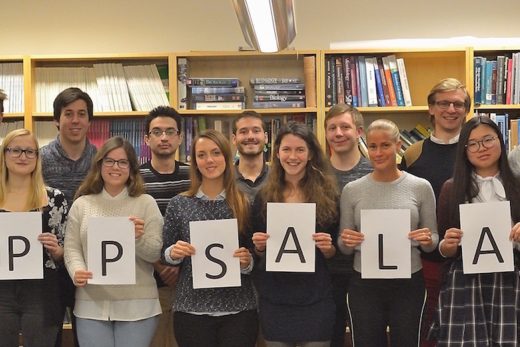19/04/2016
SensUs team update: SensUpp
This is the third edition of a series of updates from the SensUs student teams. In this series, the teams summarize what they have been doing, recently. This week is the update from the SensUpp - Uppsala SensUs team:
The SensUpp - Uppsala SensUs team is very happy to share the news and developments from the first three months of the competition.
Our first goal was to make a comprehensive literature search and with that, understand how the current biomedical devices that measure creatinine work, thus finding where improvement is needed.
The team came across many bureaucratic problems, such as creating a legal student organization to open a bank account, finding an insurance for us to work in the laboratory and finding a laboratory to work in, but luckily we are a group of motivated students, we managed to get all the work done by splitting up in groups. We would like to acknowledge Prof. Helena Danielson for the immense help in regard to the insurance and the search for a laboratory!
The team also had the chance to participate in a science fair, called SciFest, that occurred in Uppsala in the beginning of March. In SciFest we presented our SensUs project to the public, that consisted of primary and high school students, their parents and surprisingly many researchers and entrepreneurs that were visiting the fair. SciFest allowed us to make some interesting contacts and promote awareness of kidney disease.
After these first three months, the team decided that it was time to decide which technology we are using. By the beginning of March, we had two research groups within Uppsala University that were willing to help us with microfluidics (Professor Klas Hjort) and solid state electronics (Professor Zhen Zhang), two essential areas of expertise that are necessary for the development of a biosensor.
The microfluidic will be a crucial piece of our biosensor that will allow the transport of the plasma into the sensor and enable a dilution step if necessary. The group of Zhen will allow the design of innovative electrodes to detect signals generated from enzymes or molecular imprinted polymers (MIPs), which are the sensing technologies that we will use. Enzymes and MIPs will interact directly with the creatinine molecule and produce a signal that will be read by the electrodes. In addition to this, we also received assistance from the chemistry department from which Professor Helena Danielson belongs.
The MIPs are extensively described in the literature, and may be a feasible and innovative way to measure creatinine. The development of the MIPs will originate from a partnership of the SensUpp with a visiting professor in Uppsala University, Ian Nichols. For that reason, as mentioned above, we will start with both sensing technologies: MIPs and enzymes, deciding later for one of them, depending on the sensitivity and specificity of each method.
The team is very excited for the next developments, stay tuned to our Facebook page and contact us for support or more information!
Sincerely,
SensUpp - the Uppsala University SensUs team.

Facebook
YouTube
LinkedIn
Instagram